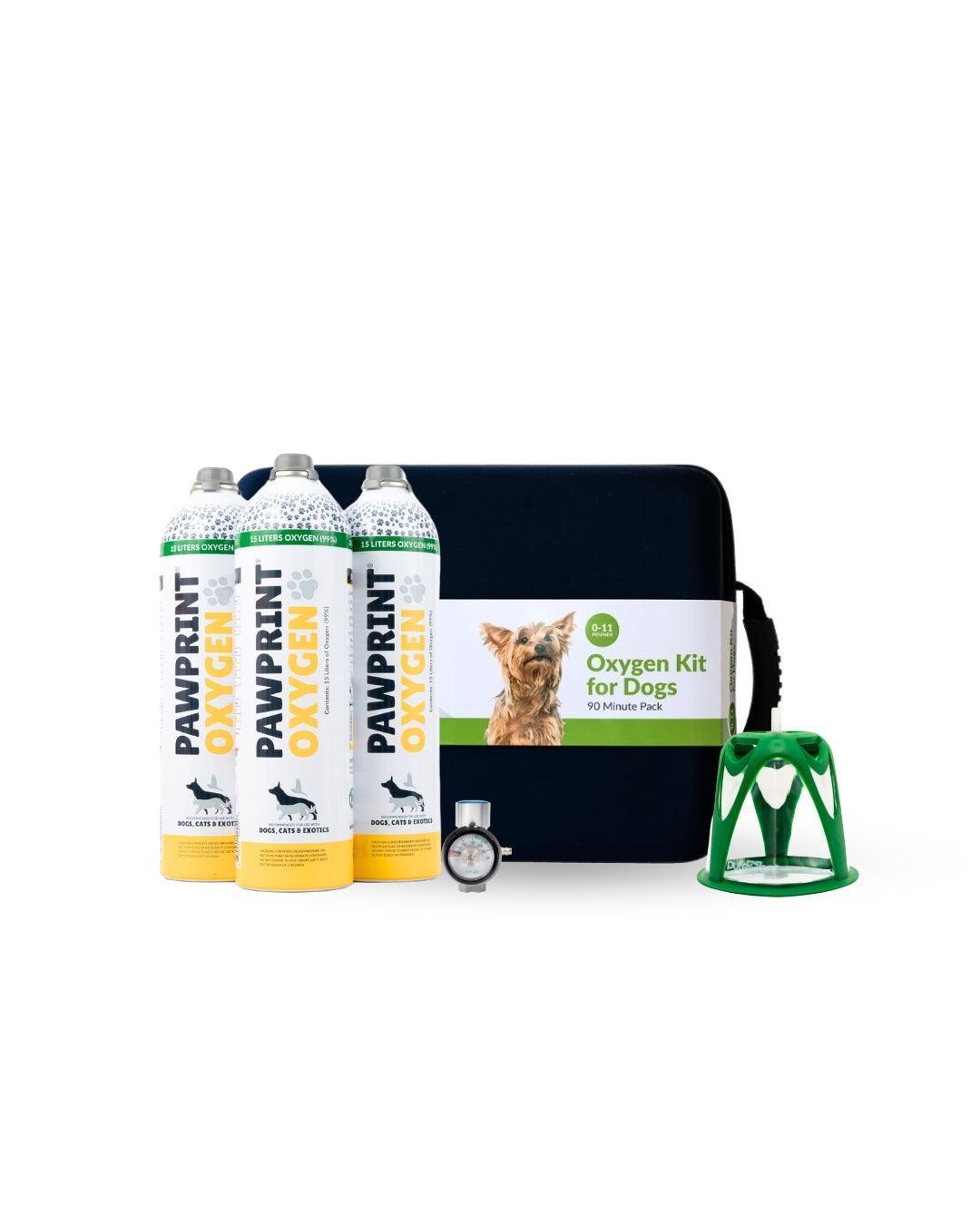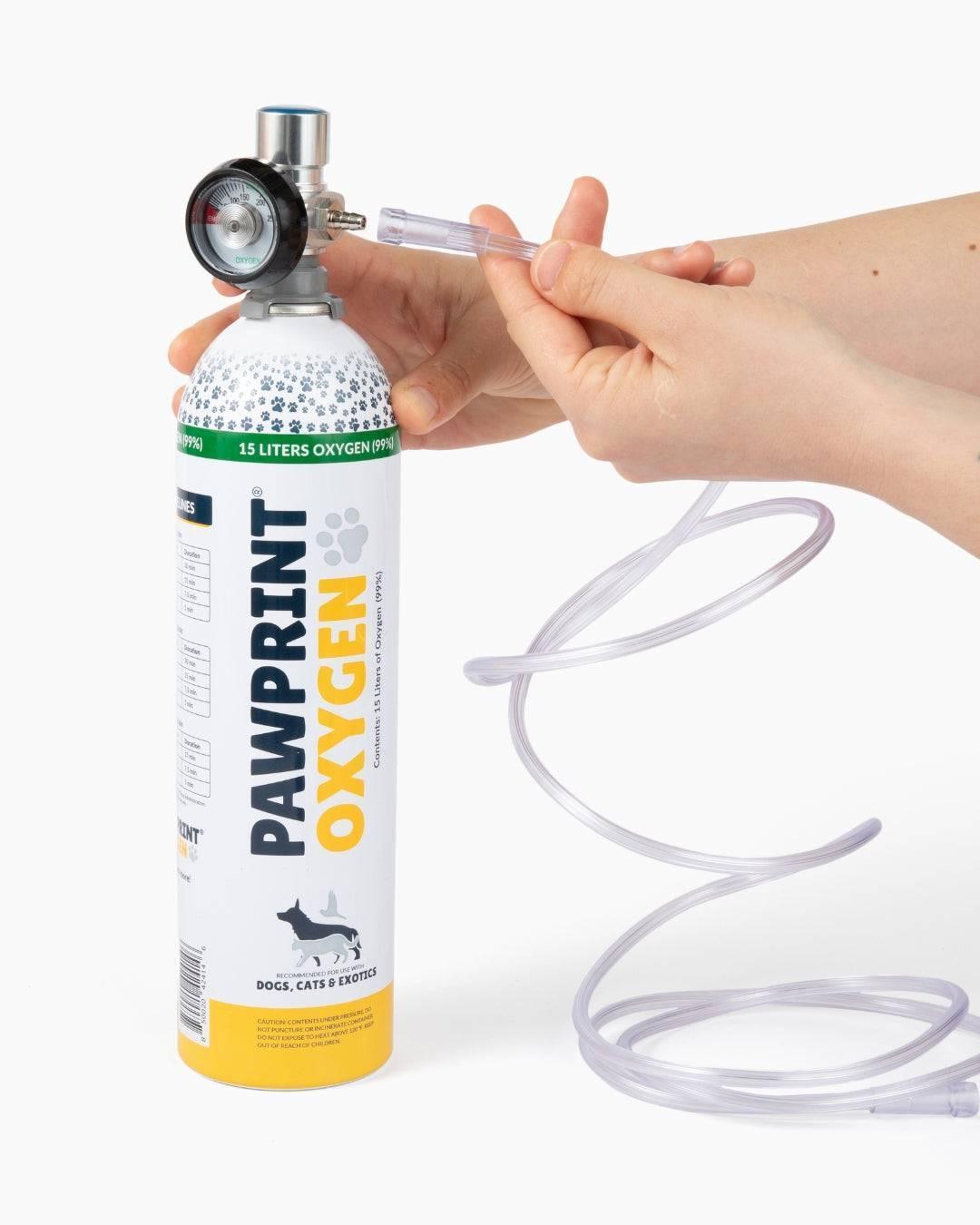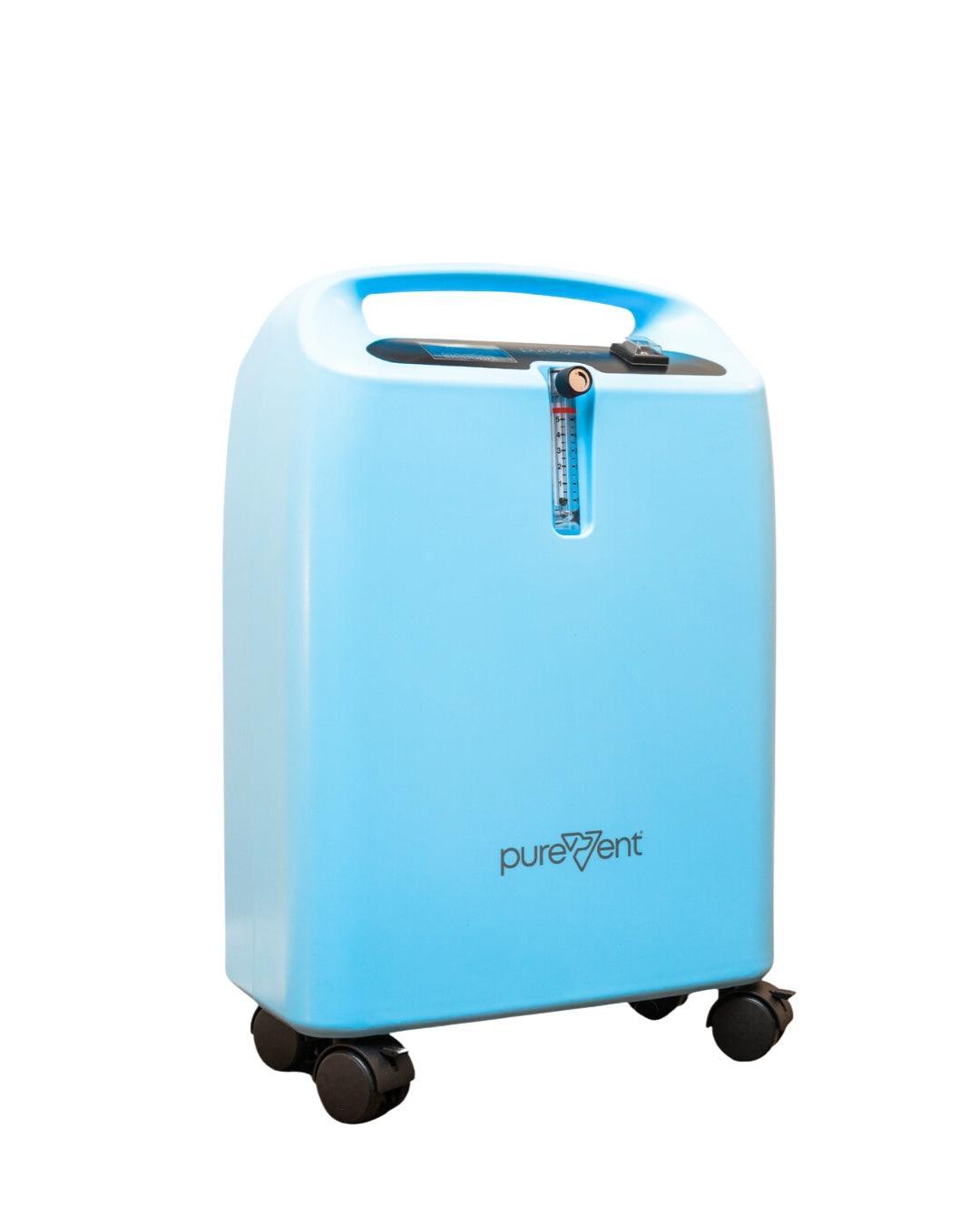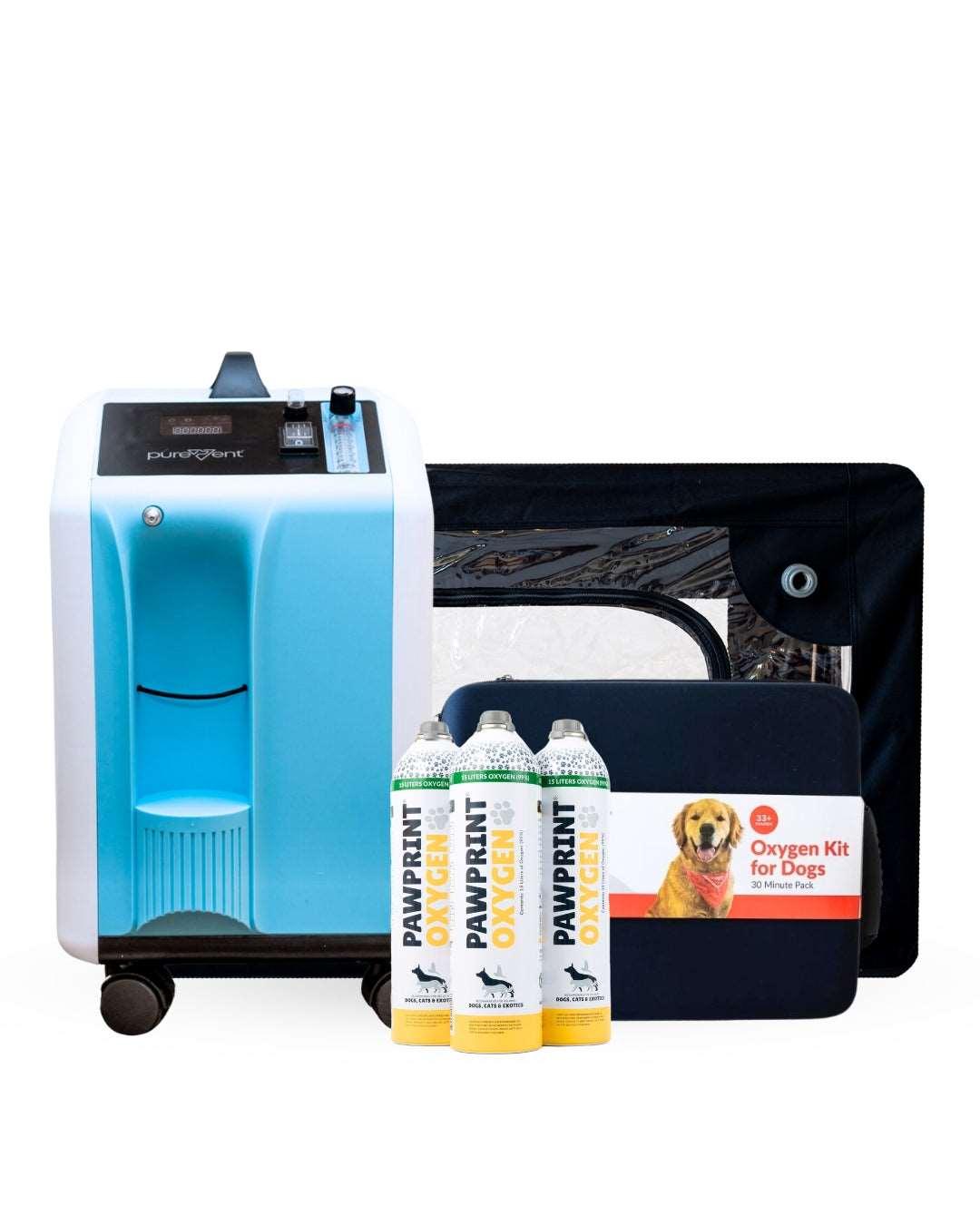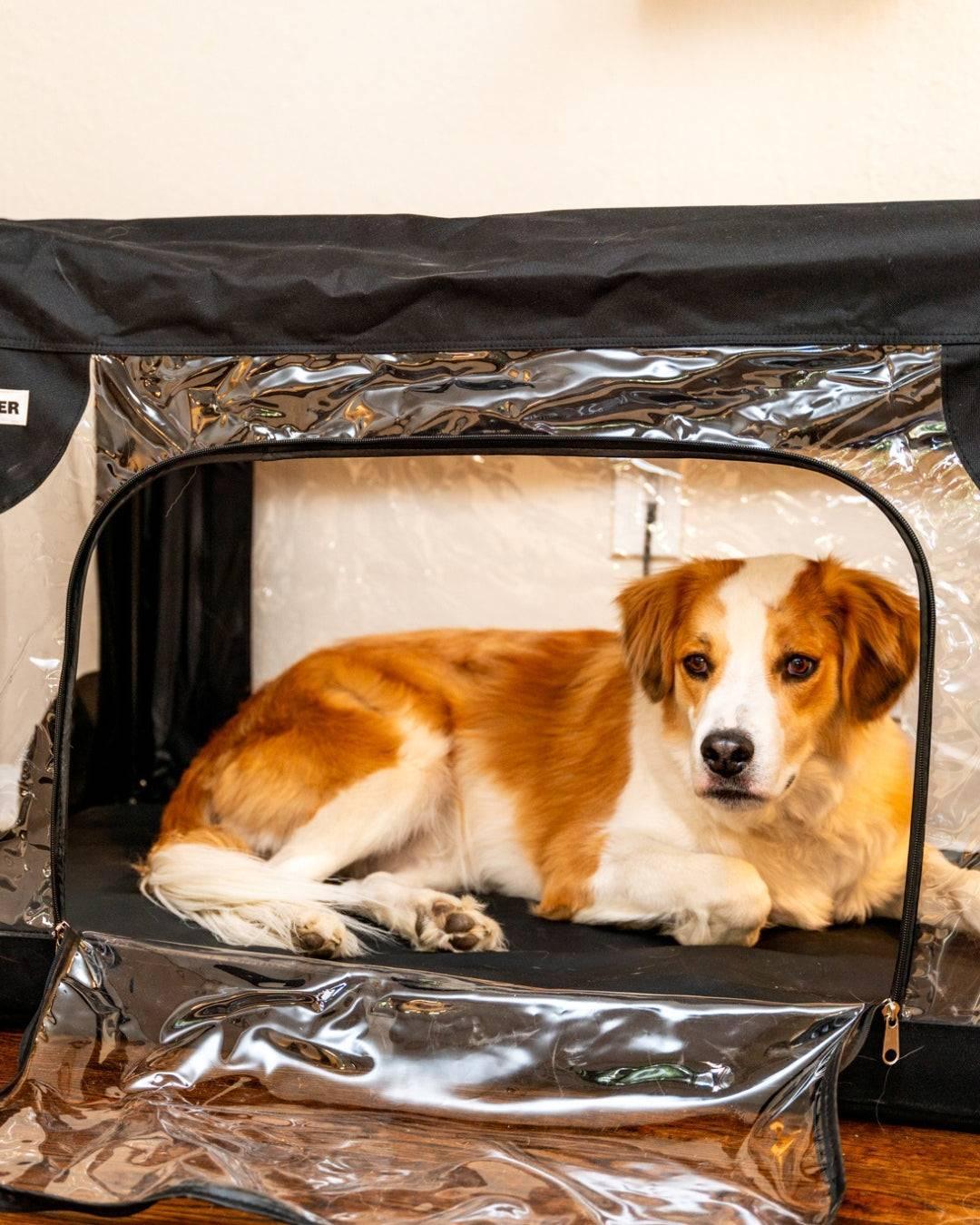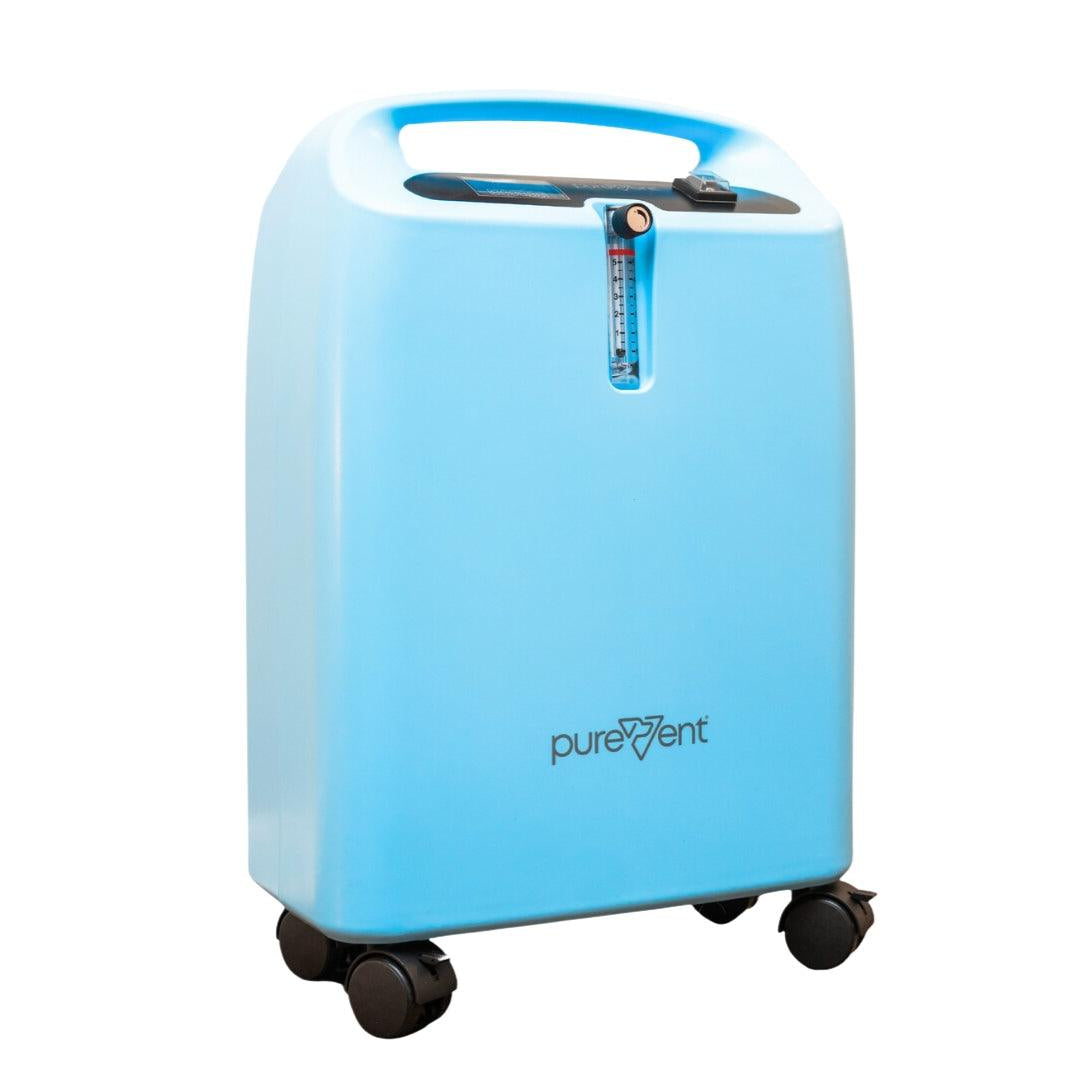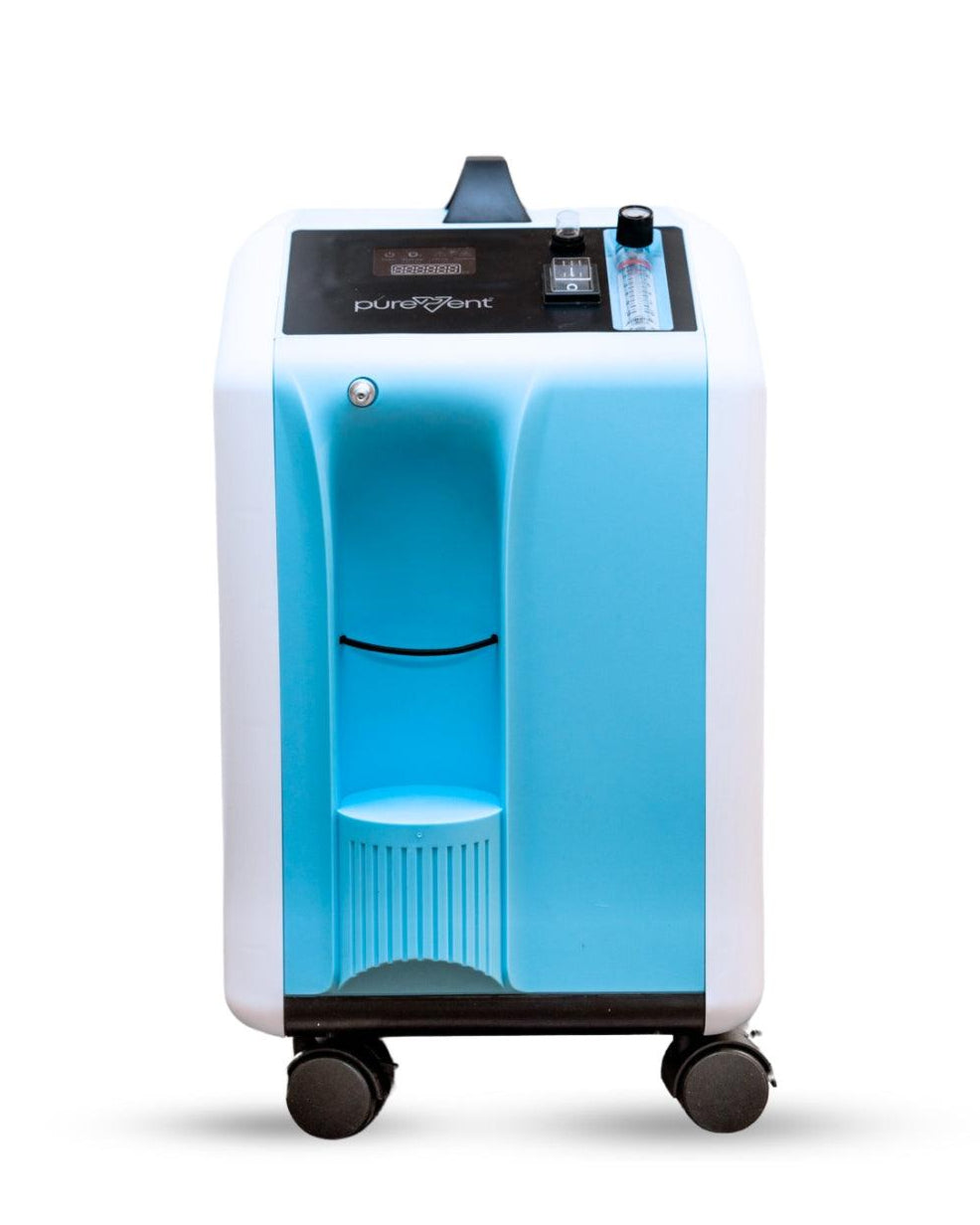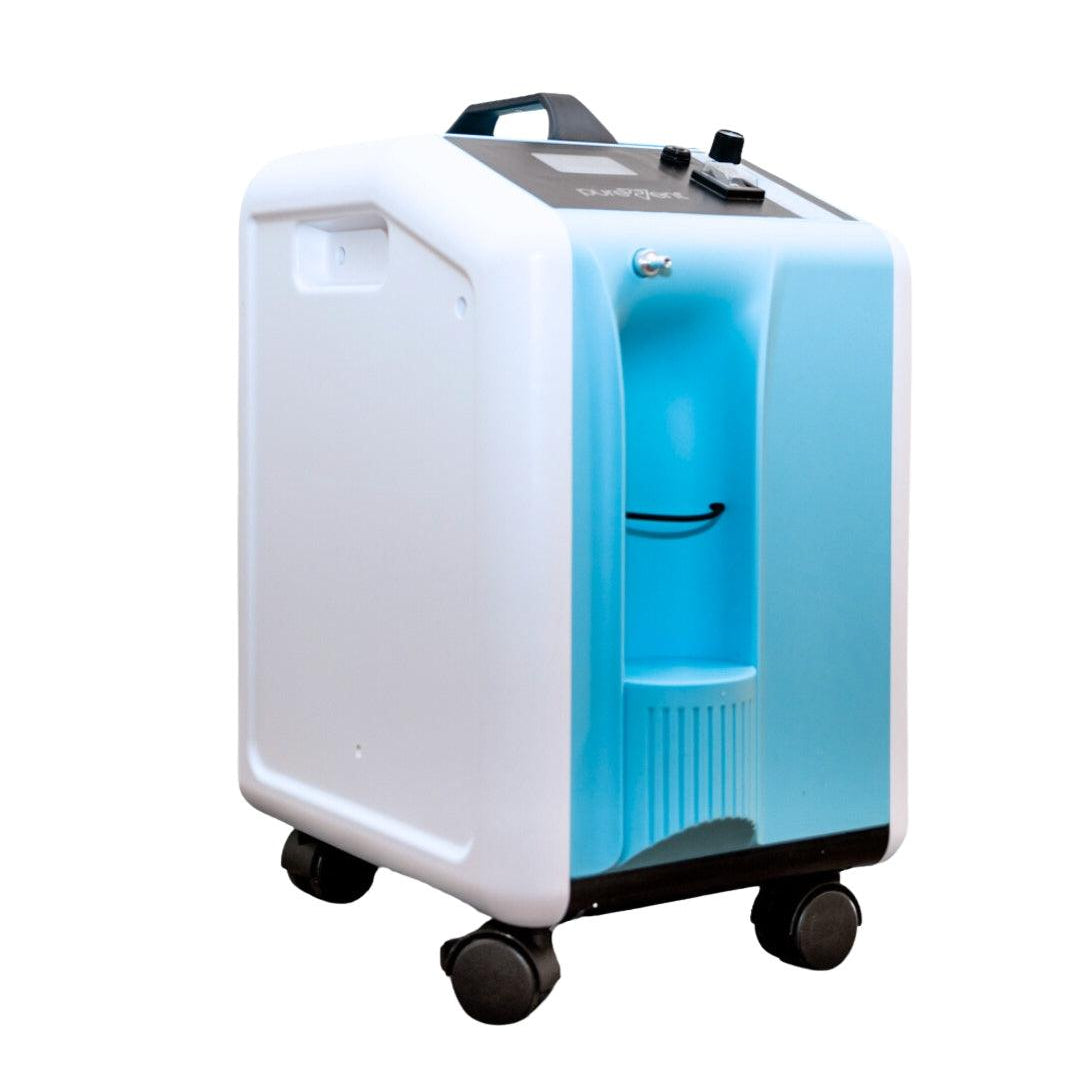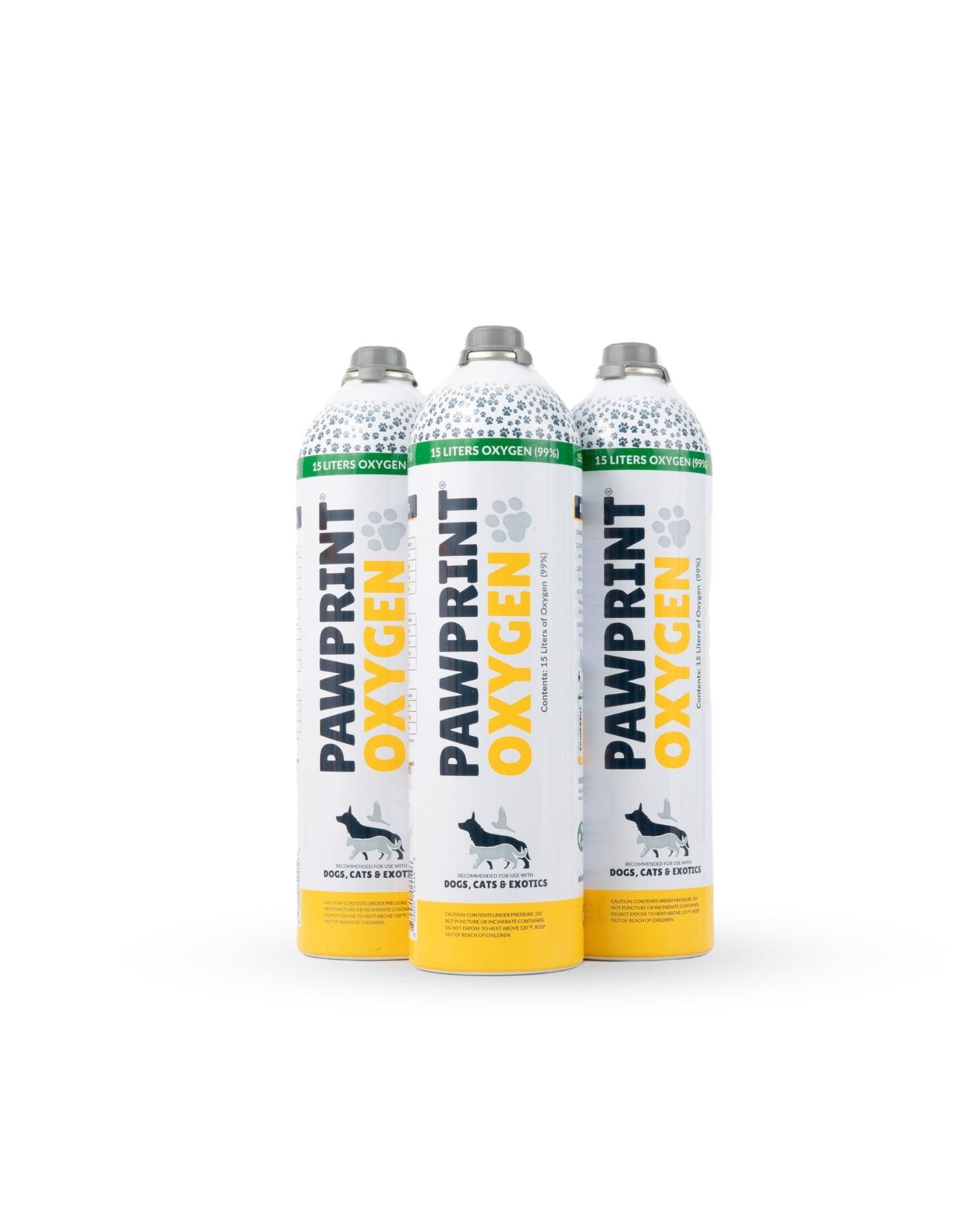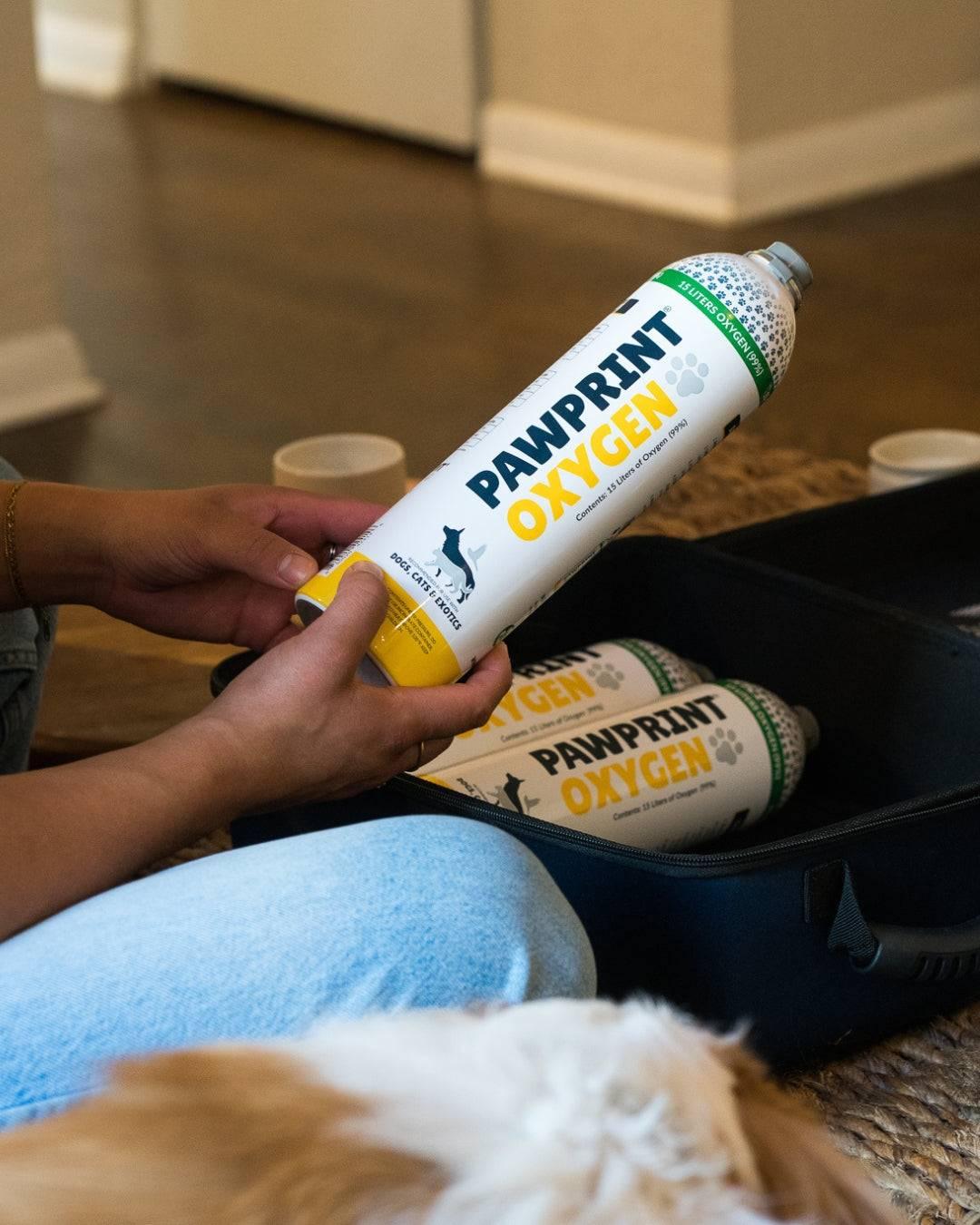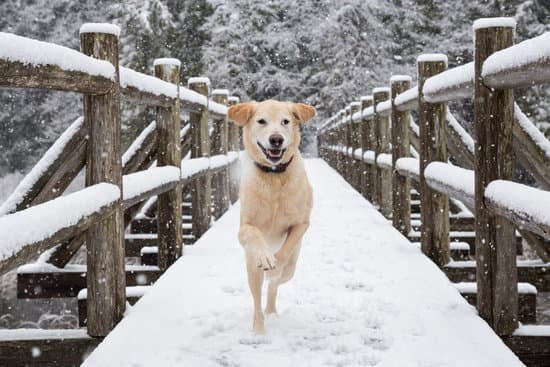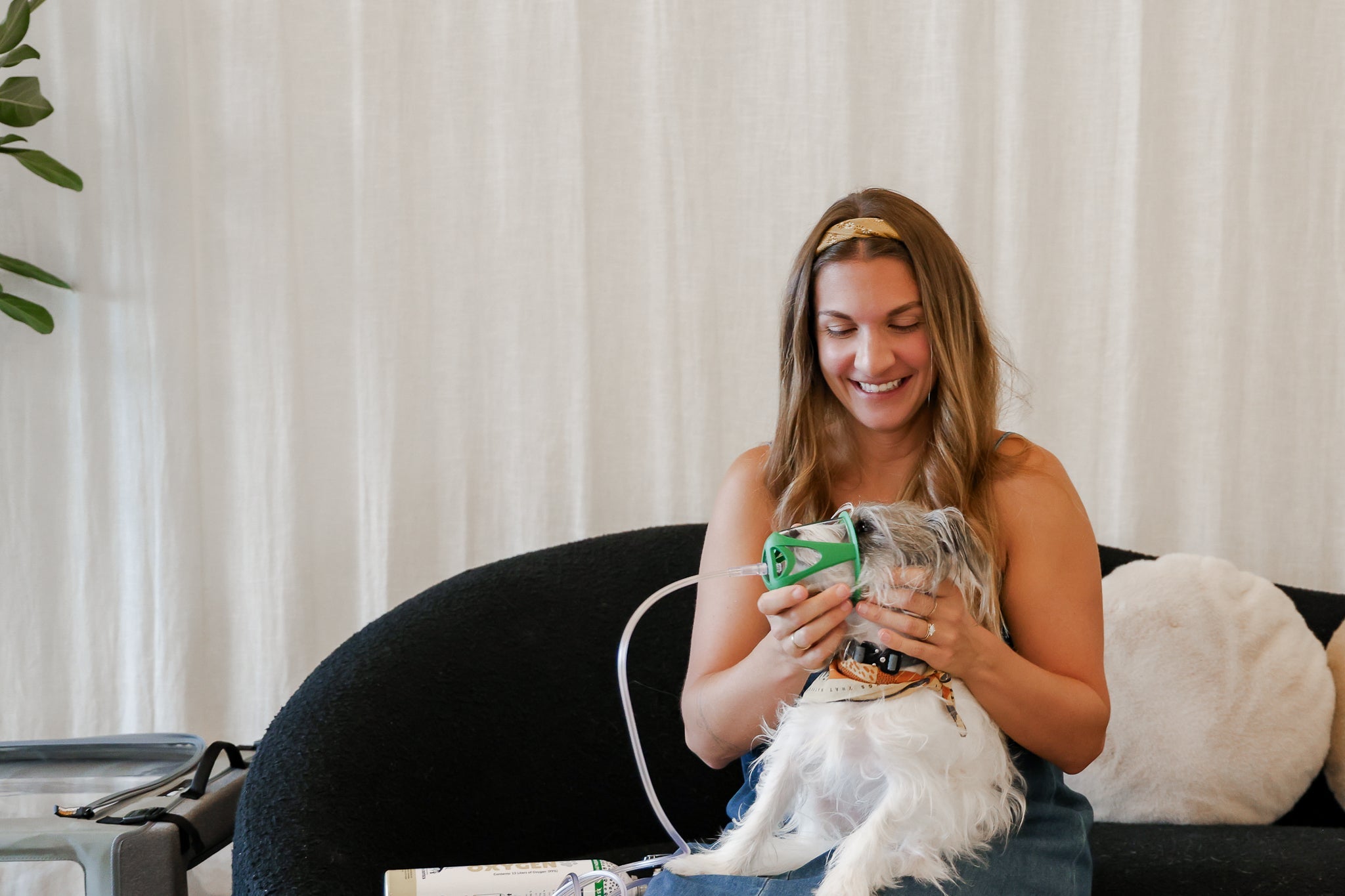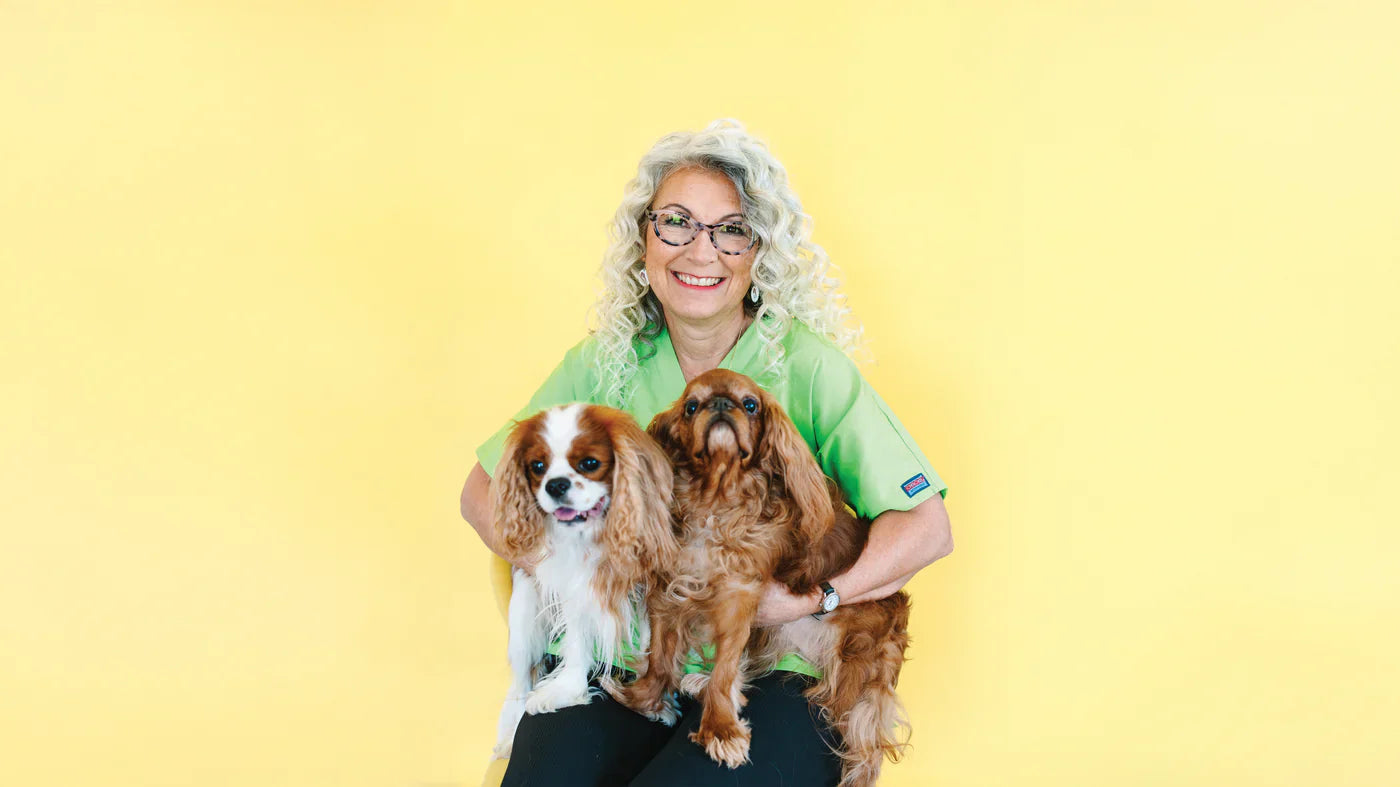Pets, like people, can develop serious heart and lung conditions—such as congestive heart failure, pneumonia, tracheal collapse, and brachycephalic airway syndrome—that make it difficult to breathe. Oxygen therapy is often essential during these emergencies and recovery periods.
While oxygen support was once limited to veterinary clinics, pet-specific concentrators and chambers now make it possible to provide safe, effective therapy at home. These tools reduce stress, improve access to care, and help pets breathe easier without the cost and anxiety of repeated hospital visits.
But is it safe? In this article, we’ll explain how at-home oxygen therapy works, why it’s safe with proper use, and how it’s transforming modern pet care.
Table of Contents

What Is an Oxygen Concentrator and Chamber?
At-home oxygen therapy may sound complex, but the technology behind it is surprisingly simple and has been specifically designed with your pet’s safety in mind. Understanding how oxygen concentrators and chambers work can help pet owners feel confident in using this equipment as part of their pet’s recovery plan.
An oxygen concentrator is a medical-grade device that takes in the air from your home environment, removes nitrogen, and delivers a continuous stream of concentrated oxygen, typically over 90%. For pets, this oxygen is delivered through a mask or into an enclosed chamber, depending on the pet’s size, temperament, and medical needs. Unlike oxygen tanks, which run out and require frequent refills, concentrators provide a steady supply of oxygen with no need for refills.
Key features of the oxygen concentrator:
- Medical-grade, continuous oxygen delivery (over 90% concentration)
- Pulls in ambient air and removes nitrogen so there is no need for refills
- Safe for long-term use
- Compatible with pet oxygen masks or enclosed chambers for flexible delivery
- No compressed gas or explosion risk like oxygen tanks
For pets who are anxious or unable to tolerate a mask, the PureVent Pet Oxygen Chamber offers a stress-free alternative. This chamber creates a safe, enclosed space where oxygen-rich air can circulate evenly. Designed with ventilation ports, a secure zippered entry, and transparent panels, the PureVent Chamber allows your pet to rest calmly while receiving consistent oxygen therapy. It’s ideal for small to medium pets, especially cats, senior dogs, or brachycephalic breeds like French Bulldogs or Pugs that require gentle care.
Key features of the PureVent Pet Oxygen Chamber:
- Enclosed design helps reduce stress and anxiety during therapy
- Ventilation ports allow safe air exchange (CO₂ and heat escape)
- Clear panels provide visibility and comfort for both pet and owner
- Zippered entry allows easy access for placing or removing your pet
- Ideal for pets who don’t tolerate masks, including flat-faced breeds
Key Differences Between Vet Clinic Oxygen Delivery vs. At-home Options
One of the biggest differences between veterinary clinic oxygen delivery and at-home systems is accessibility and comfort. In a clinical setting, pets are often placed in rigid oxygen cages or receive oxygen via tubes while under observation. While effective, this experience can be stressful for both pets and their owners. At home, oxygen therapy can be administered in a more relaxed setting, often under your supervision, using equipment like the Pawprint Oxygen Concentrator and PureVent Pet Oxygen Chamber. These solutions are easy to use, quiet, and specifically engineered to be pet friendly.
With the right tools and veterinary guidance, home oxygen therapy provides not only effective treatment, but also greater peace of mind for pet parents who want to support their animal’s healing in the comfort of home.
Is It Safe to Use Oxygen Therapy for Pets at Home?
Safety is the number one concern for pet parents considering at-home oxygen therapy and rightfully so. The good news is that when prescribed by a veterinarian and used correctly, oxygen therapy at home is not only safe for pets, but also an incredibly effective way to manage respiratory and cardiac conditions outside of the hospital setting.
Can Oxygen Therapy Cause Harm If Used Improperly?
Like any medical treatment, oxygen therapy must be administered correctly to ensure safety and effectiveness. That's why it’s always prescribed by a veterinarian, who determines the appropriate flow rate, oxygen saturation, and duration of use based on your pet’s size, condition, and oxygenation needs.
Improper use, such as delivering oxygen at too low a flow rate or for prolonged periods without breaks can theoretically pose risks. However, with today’s pet-specific equipment and clear instructions provided by veterinary professionals and Pawprint Oxygen staff, these risks are extremely rare.
Will My Pet Tolerate the Mask or Chamber?
Many pet owners worry that their pet won’t tolerate a mask or being inside a chamber. Fortunately, most pets adapt quickly, especially when treatment is provided in the comfort of home. The PureVent Pet Oxygen Mask is soft, form-fitting, and designed specifically for animals, unlike repurposed human equipment that can cause discomfort or anxiety.
For pets that are mask-averse or need prolonged oxygen support, the PureVent Oxygen Chamber offers a quiet, enclosed space with oxygen-rich airflow and ventilation ports to ensure your pet remains calm and safe throughout the therapy session.
What Safety Measures Are in Place?
At-home medical-grade oxygen concentrators and chambers are packed with safety features to give pet parents peace of mind.
Easy to Read Flow Regulators: Ensures that your pet receives the prescribed oxygen dosage—no more, no less.
Ventilated Chambers: Prevents the buildup of excess carbon dioxide, heat, and humidity.
Clear Panels for Easy Monitoring: Allows you to observe your pet during treatment in an oxygen chamber, and to intervene if needed.
No Pressurized Oxygen Storage: Unlike traditional oxygen tanks, oxygen concentrators do not store compressed gas. They generate oxygen from ambient air, which eliminates the risk of explosion or leakage. This makes them significantly safer operating and storing in your home.
Veterinary Oversight Ensures Safety and Efficacy
Every Pawprint Oxygen extended therapy system requires a valid prescription from a licensed veterinarian. This guarantees that the oxygen concentrator is used only when it’s medically appropriate and that your pet’s care is guided by a professional who can monitor response and adjust treatment if necessary.
Your vet will also provide detailed instructions for:
- Correct oxygen saturation settings based on your pet’s medical condition
- Recommended therapy session durations and frequency
- Monitoring your pet’s breathing and behavior during use

Designed for Pets, Backed by Veterinary Science
Unlike DIY setups or makeshift solutions, Pawprint Oxygen’s systems are designed specifically for animal use. From flow regulators that match a dog or cat’s respiratory capacity to soft-seal masks and breathable chambers, every component is tailored to keep your pet safe, stress-free, and supported.
For example:
- The PureVent Pet Oxygen Mask is contoured to fit a pet’s face, reducing discomfort and stress during therapy.
- The PureVent Pet Oxygen Concentrator provides clean, medical-grade oxygen on demand without the hazards of pressurized tanks or the need to refill or replace.
When used under veterinary guidance and with pet-specific equipment, oxygen therapy at home is not only safe, but also a vital tool in managing many common pet health conditions.
How Home Oxygen Equipment is Designed for Safety
At-home oxygen therapy systems from Pawprint Oxygen are designed with your pet’s safety in mind, offering effective, low-stress respiratory support without the risks of human-grade or DIY alternatives. Here’s how they protect your pet during every session.
Flow Rates Are Carefully Regulated
Proper flow rate is critical for safe, effective oxygen therapy. Pawprint Oxygen concentrators use calibrated regulators to deliver the right amount based on your pet’s size, species, and condition. Your vet will prescribe the correct dosage, and the equipment ensures it’s delivered accurately.
Oxygen Chambers Are Fully Ventilated
The PureVent Pet Oxygen Chamber maintains a stable oxygen-rich environment while safely venting CO₂, heat, and humidity to prevent buildup. For added safety, always monitor your pet to ensure they stay calm, comfortable, and responsive during treatment.
The PureVent Pet Oxygen Mask Minimizes Stress
Many pets in respiratory distress can’t tolerate human-grade oxygen masks. The PureVent Pet Oxygen Mask features a soft seal, clear visibility, and quiet airflow to reduce anxiety and make therapy easier for both pets and owners.
Timed Usage and Concentration Limits
While effective, prolonged high-concentration oxygen can cause toxicity. That’s why home therapy is time-limited and guided by your vet. Following their prescribed protocol, whether 15 minutes or 2 hours, ensures safe, effective support.
Non-Invasive and Low-Stress for Your Pet
Pawprint Oxygen systems offer gentle, non-restrictive support in the comfort of home, no hospital cages or invasive nasal cannulas. Designed to reduce stress and anxiety, the concentrator, mask, and chamber deliver clinical-grade therapy while keeping pets relaxed, safe, and close to family.
Common Conditions That Benefit from Home Oxygen Therapy
At-home oxygen therapy isn’t just convenient, it’s a vet-approved, essential tool for managing serious health conditions in pets. Whether your pet is recovering from surgery, coping with a chronic illness, or facing a respiratory emergency, oxygen therapy can stabilize breathing and improve comfort.
Here are some common conditions that may benefit from oxygen therapy:
- Congestive Heart Failure (CHF): Oxygen helps pets with CHF to calm their breathing by increasing oxygen in the blood and reducing strain on the heart during flare-ups.
- Pneumonia & Respiratory Infections: Supports recovery by improving oxygen exchange in inflamed or fluid-filled lungs.
- Tracheal Collapse: Provides relief during episodes of coughing and labored breathing, especially in small breeds with tracheal collapse.
- Brachycephalic Syndrome: Aids short-nosed breeds like Bulldogs and Pugs during respiratory distress, particularly in heat or after activity.
- Feline Asthma: Helps asthmatic cats recover from flare-ups by easing breathing and reducing inflammation.
- Post-Anesthetic Recovery & Hospice Care: Keeps oxygen levels stable during recovery and offers comfort for pets in palliative care.
Whether used for emergencies or ongoing treatment, at-home oxygen therapy offers a safe, effective way to support your pet’s health and quality of life.
Success Stories and Testimonials
When your little one is living with both a collapsed trachea and heart failure, every breath matters. That’s why the 15L Pet Oxygen Canister has become more than just a product in our home, it's a genuine lifesaver. We purchased this for our sweet Bichon during a particularly difficult time, and the difference it’s made has been remarkable. It’s lightweight, easy to use, and delivers a gentle but effective stream of oxygen that helps her calm down and breathe easier within moments. The nozzle is well-designed, allowing me to position it close to her face without causing any distress or discomfort. This isn’t a cure, of course, but in those frightening moments when she's gasping or her breathing becomes labored, it gives her the extra support she needs and gives us peace of mind. We keep one canister at home and another in the car for emergencies. If your dog suffers from respiratory or cardiac issues, this product is more than helpful, it’s essential.
Our Corgi was diagnosed with kidney disease last October. She spent 7 days in an ICU at a pet emergency facility. We took her home on the 7th day, the veterinarians did not think she would make it. In late February, she started having more difficulty breathing, we took her into the clinic and again they did not think she would make it. We ordered the oxygen chamber and put her in it for therapy. She responded extremely well, and her breathing is no longer labored. We have been going for walks with her and take a pet stroller for when she gets tired. We put her in the chamber for a couple of hours each day. We are using 40% oxygen. At night we leave the chamber open, and she sleeps in it overnight.
Ongoing Monitoring and Treatment Adjustments
Oxygen therapy isn’t a static treatment; it evolves based on your pet’s response. Your vet may recommend adjustments to:
- Therapy frequency or duration
- Medications that support respiratory function
- Follow-up diagnostics like chest x-rays or blood oxygen testing
By maintaining communication with your veterinary team, you ensure that your pet continues to receive the best possible care, even outside of the clinic. Many veterinarians will also schedule rechecks to evaluate whether oxygen therapy is still needed and if adjustments are needed.
Medically Guided, Not DIY Care
It’s important to emphasize that home oxygen therapy is not a DIY solution. It’s a medically guided treatment that extends the reach of your vet’s care into your home, allowing you to manage chronic conditions, respond to respiratory emergencies, and improve your pet’s quality of life between visits.
At Pawprint Oxygen, we work directly with veterinary professionals to fulfill prescriptions and provide pet parents with the tools and instructions needed to use oxygen therapy safely. Our systems are designed to be intuitive and stress-free while adhering to strict clinical standards. With your veterinarian leading the way, at-home oxygen therapy becomes a powerful, personalized extension of the care your pet receives in the clinic.
Pawprint Oxygen: Trusted, Safe, and Veterinarian-Approved
When it comes to your pet’s health, choosing the right oxygen therapy provider matters. At Pawprint Oxygen, we are committed to delivering veterinary-approved, high-quality oxygen solutions that you can trust, because your pet deserves the best care, whether they’re at the clinic or in the comfort of your home.
Comprehensive Oxygen Therapy Solutions for Pets
We offer a full range of oxygen therapy products designed specifically for animals, including:
- The PureVent Pet Oxygen Concentrator: a medical-grade device that generates a continuous flow of oxygen without the risks or costs of compressed tanks.
- The PureVent Pet Oxygen Chamber: a stress-reducing, ventilated enclosure for pets who need non-mask-based oxygen support.
- The Portable Oxygen Kit: a portable solution that includes lightweight oxygen canisters, a flow regulator, and the PureVent Pet Oxygen Mask, ideal for use during transport or emergency situations.
These products are built to be easy to use, safe, and effective, making them ideal for both short-term emergencies and long-term medical management.
Does Pawprint Oxygen supply medical-grade concentrators?
Yes, Pawprint Oxygen sells medical-grade, continuous flow oxygen concentrators that support a safe environment for your pet during oxygen therapy. We have two models:
- PureVent 5L Oxygen Concentrator: This model has a maximum flow rate of 5 liters per minute, which is required for the medium oxygen cages.
- Drive 1025DS 10L Oxygen Concentrator: This model has a maximum flow rate of 10 liters per minute, which is required for the large oxygen cage.
Do I need to refill the oxygen concentrator with more oxygen?
No, you do not need to refill an oxygen concentrator. It constantly generates oxygen by pulling in the room air and concentrating the oxygen down to 90% oxygen gas, so you never need to worry about running out of oxygen.
What maintenance is required for the oxygen concentrator?
These machines are very easy to use and require little maintenance. Other than the occasional wipe-down to remove excess dust and debris, there are two filters within the concentrator. The first filter you’ll see on the back is the pre-mesh filter. This can be removed and rinsed as needed with warm soapy water and allowed to dry completely before putting it back on the machine (much like your vacuum’s sponge filter). Behind the pre-mesh filter is the Box filter, which does not need to be replaced until you’ve reached 5,000 hours (the hour-meter is the small digital display on the side of the unit) or one year of steady use. If you are renting, we will ensure your box filter is taken care of before sending out your unit!
The Small and Medium Oxygen Cages require a flow rate of at least 5 liters per minute. The Large Oxygen Cage requires a flow rate of 10 liters per minute.
FDA Class I Registered and Built for Clinical Standards
Safety and quality are at the core of every product we manufacture. Our oxygen concentrators are FDA Class I registered medical devices, meaning they meet strict regulatory standards for use in animals under veterinary supervision. We work closely with veterinarians nationwide to ensure that every oxygen therapy system is aligned with best practices in veterinary medicine.
Our partnerships with veterinary clinics, hospitals, and emergency specialists reinforce our commitment to clinical excellence, and ensure pet parents receive equipment they can feel confident using at home.
Support and Education Every Step of the Way
We know that providing medical care at home can feel overwhelming, especially during a health crisis. That’s why Pawprint Oxygen offers comprehensive customer support and education to guide you every step of the way.
Whether you're setting up your concentrator, learning to use the chamber, or monitoring your pet's response to therapy, our support team is available to:
- Answer product and prescription questions
- Assist with setup and troubleshooting
- Provide video tutorials and usage guides
- Coordinate with your veterinarian to ensure safe and effective treatment
From the moment you reach out to us, you’re not just purchasing equipment, you’re partnering with a team dedicated to your pet’s comfort and health.

Peace of Mind Through Safe, Effective Oxygen Therapy
If your pet has a heart or respiratory condition, it’s natural to feel overwhelmed. But rest assured, oxygen therapy is a safe, vet-approved solution—especially when guided by a professional and delivered with pet-specific equipment.
Pawprint Oxygen’s concentrators, pet oxygen chambers, and PureVent Pet Oxygen Masks are designed for safety, comfort, and ease of use at home. With regulated flow rates and stress-free delivery, at-home oxygen therapy can reduce emergency visits, support recovery, and improve your pet’s quality of life.
Whether managing a chronic condition or preparing for emergencies, Pawprint Oxygen is here to provide the tools, guidance, and compassionate care you need every step of the way.
Key Takeaways
At-home oxygen therapy is safe and effective when prescribed by a veterinarian and administered with pet-specific equipment like Pawprint Oxygen's oxygen concentrators and chambers.
Oxygen concentrators deliver continuous, medical-grade oxygen without the risks of pressurized tanks, while the PureVent Pet Oxygen Chamber offers a low-stress alternative for pets who don’t tolerate masks.
Built-in safety features such as regulated flow rates, ventilated chambers, and no compressed gas storage make home use safe and reliable.
Common conditions that benefit from oxygen therapy include congestive heart failure, pneumonia, tracheal collapse, brachycephalic syndrome, feline asthma, and post-anesthetic recovery.
Veterinary oversight is essential to ensure proper dosage, monitoring, and adjustments based on your pet’s evolving needs.
Pawprint Oxygen concentrators are FDA Class I registered and developed in partnership with veterinary professionals to meet clinical standards for at-home care.
Comprehensive support and education empowers pet owners to confidently provide respiratory support at home.




